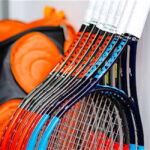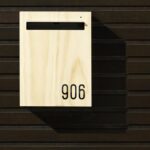A good pair of binoculars is essential for spotting birds. They help you notice colours and fine details and improve your chances of identifying exactly what you saw. However, choosing the right binoculars can be even more challenging than discerning between the 830 species of birds Australia is home to. To make your search much easier, here are some important factors to consider.

The Ideal Magnification
When shopping for professional binoculars for bird watching as well as other outdoor activities, you’ll notice that all models have numbers in their names, like for instance 10×50 or 15×70. The first number is the zoom while the second is the diameter of the lens in millimetres. In other words, 10×50 binoculars will magnify objects 10 times through a 50mm lens. Although you’d think a higher zoom number is better, the opposite is true for bird watching – the higher the magnification the smaller your field of vision will be. With that being said, it’s recommended to go for lower magnifications such as 8x or 10x as they produce a brighter image and give you a wider field of vision which makes it easier to find and follow birds.
Type of Lens
Of course, the quality of vision will also be affected by the type of lens the binoculars have. There are two types of binocular lenses – plastic and glass ones. Similar to eyeglasses, binoculars with glass lenses sharpen vision. As glass lenses can reflect light, it’s recommended to choose ones that come with anti-reflective coating. In comparison, plastic lenses produce a lower quality image. with lower quality. On the other hand, they are much cheaper and more hardwearing.
Weatherproofing
If you don’t want any rain to stop you from observing your subjects, think about getting a decent pair of waterproof binoculars. Proper waterproofing is essential to prevent corrosion. What’s more, many professional binoculars are also sealed with O-rings which prevents moisture from getting inside and messing up your vision, as well as dust and other debris. However, rain isn’t your only enemy, there’s also fog to think about. Nitrogen or Argon purged binoculars have the inside air substituted with dry gas which prevents the lens from fogging up.
Size and Weight
Size and weight are an important consideration when choosing binoculars for bird watching. After all, you’ll be holding the binoculars for long periods of time and you don’t want any wrist pain to settle in just when you’ve caught a glimpse of an interesting subject. With that being said, lightweight and compact binoculars are usually the preferred choice. However, binoculars that are lighter also have smaller lenses which aren’t able to get as much light as the bigger ones. As a result, the colours observed won’t be as bright and beautiful as those you can see with larger binoculars. With that being said, you need to make a compromise. The most popular choice by bird watchers are binoculars with lenses that are 40mm or 42mm which are not as heavy as the standard size 50mm binoculars.





















